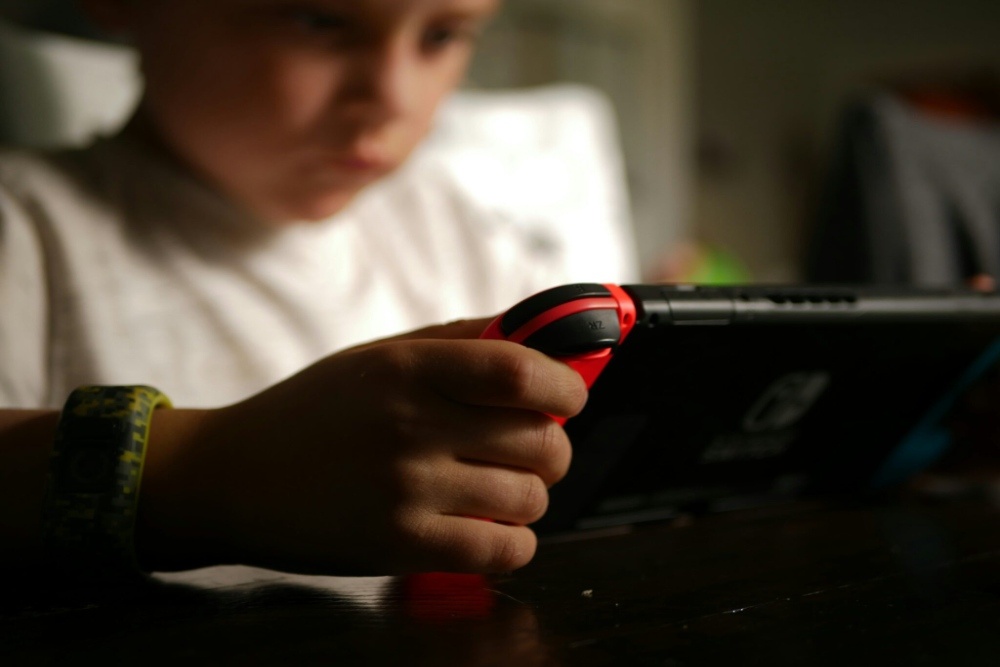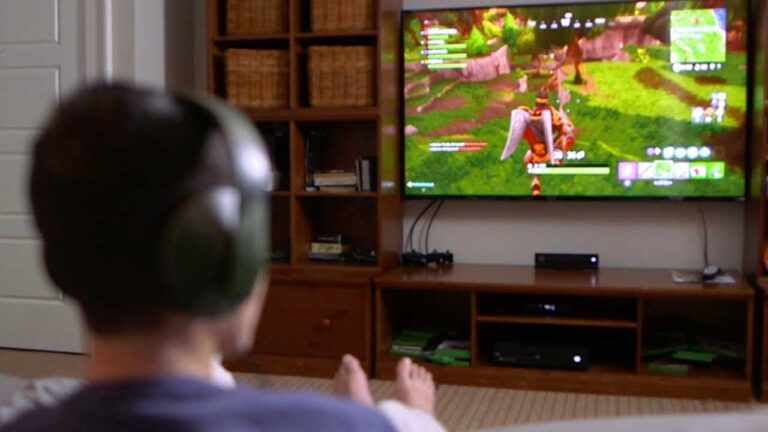
Minecraft. Fortnite. Roblox. BGMI. Chances are, at least one of these names (or countless others) is a regular part of your household conversations, especially if you have children or teenagers. Video games are a massive part of modern childhood and adolescence, offering worlds of creativity, social connection, and thrilling challenges. For many kids in Vadodara, across India, and globally, games like Minecraft are a source of joy and even learning. But as parents, we sometimes witness a concerning shift. The easy enjoyment fades, replaced by an obsessive focus. Asking your child to log off triggers epic meltdowns. Schoolwork starts slipping. Is this just intense enthusiasm, or could it be one of the warning signs child addicted video games?
Navigating the line between healthy engagement and problematic use can be incredibly confusing and worrying. Gaming addiction, clinically recognized as Gaming Disorder or Internet Gaming Disorder, is a real and growing concern, impacting families everywhere. It’s not just about the hours logged; it’s about a pattern of behaviour that causes significant harm.
Recognizing the signs early is crucial for intervention. This guide outlines 7 key warning signs your child might be addicted to video games in 2025, helping you understand when fun crosses the line into a potential problem.

Healthy Hobby vs. Problematic Preoccupation: Knowing the Difference
Before diving into the warning signs, it’s vital to distinguish passionate gaming from addictive gaming. Many kids love video games, talk about them frequently, and spend considerable time playing – this doesn’t automatically equate to addiction.
- Healthy Enthusiasm: Gaming is one interest among several; the child can stop playing when needed (even if they grumble a bit); they maintain friendships offline; schoolwork and chores are generally completed; gaming is a source of fun or social connection without causing major life problems.
- Problematic Use / Addiction: Characterized by impaired control over gaming; gaming taking increasing priority over other activities and responsibilities; continuing or escalating gaming despite negative consequences; and causing significant impairment in personal, family, social, educational, or other important areas of functioning.
Keep this distinction in mind as we explore the specific warning signs. Look for a pattern or cluster of these signs persisting over time (clinically often 12 months, but concern can arise sooner) that cause real-world harm.
7 Key Warning Signs Your Child is Addicted to Video Games (PKW H2)
If you’re noticing several of these behaviours consistently, it might be time to take a closer look.
- Loss of Control Over Gaming
- What it looks like: This is more than just wanting “five more minutes.” It’s a repeated inability to stick to agreed-upon time limits, playing for much longer sessions than intended, or being unable to stop playing even when they know they should (e.g., late at night, before homework is done). They might make rules for themselves (like playing only an hour) but consistently fail to follow them. This also includes unsuccessful attempts to cut down – they might want to play less but find they can’t.
- Why it’s a sign: Addiction often involves losing control over the behaviour, despite intentions or negative outcomes. The urge to play overrides self-regulation.
- Preoccupation with Gaming
- What it looks like: The child seems to think or talk about gaming constantly, even when doing other things. They might be planning their next session, reliving past glories, or eagerly anticipating new game releases or updates to the exclusion of other thoughts. Their conversation frequently circles back to gaming, even when inappropriate. They might seem mentally ‘checked out’ during non-gaming activities, clearly thinking about the game.
- Why it’s a sign: This indicates that gaming has become the central focus of their life, overshadowing other interests and thoughts, a common feature of behavioural addictions.
- Neglecting Major Life Areas & Responsibilities
- What it looks like: You notice a decline in performance or effort in important areas. This could manifest as:
- Academics: Falling grades, incomplete homework, skipping school, lack of concentration on studies.
- Chores & Duties: Consistently failing to complete assigned household tasks.
- Personal Hygiene: Neglecting showering, brushing teeth, changing clothes because it interferes with gaming time.
- Sleep: Staying up very late or even all night to game, leading to daytime fatigue.
- Eating: Skipping meals or eating erratically while gaming.
- Why it’s a sign: When gaming takes precedence over fundamental responsibilities and self-care, it signals a significant problem where priorities have become skewed.
- Loss of Interest in Other Activities
- What it looks like: Hobbies and activities that your child previously enjoyed are abandoned or significantly reduced in favour of gaming. They might stop playing sports, quit clubs, avoid social gatherings with friends (offline), or show no interest in family outings they used to like. Their world narrows until gaming is the primary, or only, source of entertainment and engagement.
- Why it’s a sign: Addictive behaviours tend to crowd out other sources of pleasure and interest as the brain becomes increasingly focused on the reward pathway associated with the addiction.
- Experiencing Withdrawal Symptoms (Emotional Volatility)
- What it looks like: This is where the “meltdowns” often come in. When the child is unable to play games (due to limits, technical issues, or being away from devices), they exhibit significant negative emotional reactions. This can include intense irritability, anger, anxiety, sadness, restlessness, or frustration. They might seem genuinely unhappy or agitated when not gaming.
- Why it’s a sign: Similar to substance withdrawal, the brain and body react negatively when deprived of the activity it has become dependent on for mood regulation or stimulation.
- Deception or Conflict Regarding Gaming
- What it looks like: The child starts lying about how much time they spend gaming, plays in secret (e.g., late at night), minimizes the extent of their gaming when asked, or becomes defensive and argumentative when confronted about their gaming habits or when time limits are enforced. There might be frequent, intense conflicts specifically centred around gaming.
- Why it’s a sign: Deception often arises when individuals know their behaviour is problematic or violates rules but are unable or unwilling to control it. Conflict escalates as the gaming behaviour impacts family life and relationships.
- Continuing to Game Despite Obvious Harm
- What it looks like: This is perhaps the most critical sign. The child continues their excessive gaming patterns even when experiencing clear, undeniable negative consequences. Examples include: continuing to game late despite being constantly tired and unable to function at school; persisting with gaming even when it’s causing significant family arguments; continuing to play despite experiencing physical pain (eye strain, wrist pain); prioritizing gaming over studying even after failing exams.
- Why it’s a sign: A hallmark of addiction is the continuation of the behaviour despite clear evidence that it is causing harm to oneself or others. The compulsion to game overrides rational decision-making about consequences.
Context Matters: Interpreting the Signs
Seeing one of these signs occasionally doesn’t automatically mean your child is addicted. Teenagers can be moody (Sign #5), occasionally forget chores (Sign #3), or get intensely interested in a new hobby for a while (Sign #4). Key considerations include:
- Cluster of Signs: Are you seeing multiple signs from this list occurring together?
- Persistence: Have these behaviours been present consistently over a significant period (e.g., several months, with clinical diagnoses often looking at 12 months)?
- Significant Impairment: Is the gaming behaviour causing demonstrable, serious problems in important areas of their life (school, family relationships, social functioning, health)? This functional impairment is central to any addiction diagnosis.
- Age & Development: Consider normal developmental phases, but don’t dismiss persistent negative patterns as “just being a teenager.”
- Underlying Issues: Sometimes excessive gaming can be a symptom or coping mechanism for underlying issues like depression, anxiety, ADHD, or social difficulties.
The Bigger Picture: Why These Signs Matter
These warning signs aren’t just about bad habits; they reflect potential underlying issues related to impulse control, emotional regulation, and the brain’s reward system, as discussed in our previous post on how gaming rewires the brain. Letting these patterns continue unchecked can lead to significant long-term consequences for a child’s mental, physical, social, and academic well-being. Early recognition and intervention are key.
You See the Signs – What Next? Practical Steps for Parents
If you recognise a worrying pattern of these signs in your child:
- Observe & Document: Before confronting, quietly observe the patterns for a week or two. Note down specific examples of the behaviours you’re seeing and the time spent gaming.
- Communicate Calmly: Choose a calm time to talk to your child. Express your concerns using “I” statements (“I’ve noticed…”, “I’m worried because…”) rather than accusations (“You’re always gaming!”). Try to understand their perspective first.
- Re-establish Boundaries: Work with your child (if age-appropriate) to set clear, firm, and consistent limits on gaming time and content. Create a Family Media Plan together. (Refer to our previous post for detailed strategies).
- Encourage Balance: Actively facilitate and encourage participation in alternative offline activities. Make family time engaging.
- Consider Professional Assessment: If the problems are significant, persistent, and causing clear harm, or if you suspect underlying mental health issues, don’t hesitate to seek professional help. Consult your pediatrician, a child psychologist, a family therapist, or an addiction specialist. Resources like specialized clinics (e.g., NIMHANS SHUT clinic) or local centers (like Alpha Healing Center in Vadodara, potentially) exist, though finding gaming-specific support in India may require research.
Conclusion: From Warning Signs to Positive Action
Games like Minecraft can be wonderful tools for creativity and fun, but like any engaging activity, they carry a potential risk for problematic overuse, especially for children and adolescents. Recognizing the warning signs your child is addicted to video games – from loss of control and preoccupation to withdrawal symptoms and neglecting responsibilities – is the crucial first step for concerned parents in Vadodara and worldwide.
Remember to look for a persistent pattern of multiple signs causing significant real-world harm, rather than isolated incidents or simple enthusiasm. If you see these red flags, approach the situation with calm communication, clear boundaries, a focus on balance, and a willingness to seek professional help if needed. Early awareness and supportive action can help guide your child back towards a healthier relationship with gaming and technology.
Your Call to Action: Use the 7 warning signs discussed as a mental checklist over the next week. Observe your child’s gaming patterns and behaviours honestly. If you have concerns after this period, initiate a calm conversation using the tips provided. You are not alone, and taking action is the most supportive thing you can do.
Frequently Asked Questions (FAQ)
- My child shows only one warning sign (e.g., gets irritable when asked to stop gaming). Does this mean they are addicted?
Not necessarily. Addiction is typically characterized by a cluster of symptoms occurring together over time and causing significant impairment. Occasional irritability when asked to stop a fun activity can be normal, especially for teens. However, if that irritability is extreme, accompanied by other signs (like lying about time spent, neglecting schoolwork, giving up other hobbies), and is part of a persistent pattern, then it becomes more concerning. Look for the bigger picture. - At what age can video game addiction typically start?
Problematic gaming behaviours can emerge at various ages, but adolescence is often considered a particularly vulnerable period due to ongoing brain development (especially in areas related to impulse control), increased independence, social pressures, and greater access to technology. However, concerning patterns can sometimes be seen in younger children or emerge in young adulthood. Early initiation of gaming has been suggested as a potential risk factor in some studies. - How is gaming addiction (Internet Gaming Disorder/Gaming Disorder) professionally diagnosed?
A professional diagnosis is made by a qualified mental health expert (like a psychologist or psychiatrist) using established diagnostic criteria, such as those outlined in the DSM-5 (for IGD) or the WHO’s ICD-11 (for Gaming Disorder). This typically involves clinical interviews with the individual and potentially parents, questionnaires, and assessing the presence, persistence, and severity of specific symptoms (like loss of control, preoccupation, withdrawal, negative consequences) and the resulting impairment in functioning over a defined period (usually at least 12 months, though can be shorter if severe). - Can addiction to a specific game like Minecraft be different from other game addictions?
While the underlying mechanisms of addiction (reward pathways, loss of control) are similar across different games, the specific features of a game can influence its addictive potential. Minecraft’s open-ended nature, lack of defined stopping points, and constant potential for creation/exploration could make it harder for some individuals to disengage compared to games with clear levels or match endings. However, the core warning signs of addiction (neglecting responsibilities, withdrawal, deception etc.) remain largely the same regardless of the specific game. - If I see these warning signs, should I just ban all video games?
While reducing access or taking a temporary break (“digital detox“) might be part of a management plan (especially if agreed upon or recommended by a professional), a complete, sudden, and indefinite ban without addressing underlying issues or providing alternatives can sometimes backfire, leading to increased conflict, secret gaming, or worsening of underlying emotional problems if gaming was used as a coping mechanism. A more balanced approach involving communication, clear limits, encouraging alternatives, and potentially professional guidance is often more effective long-term.






